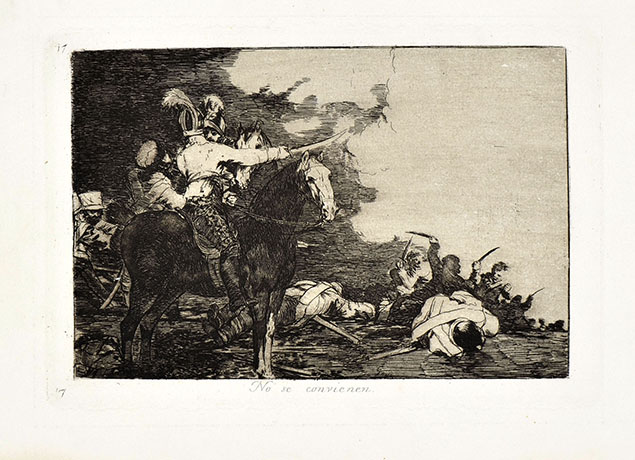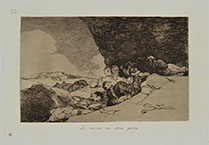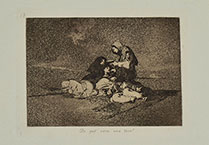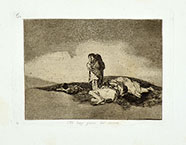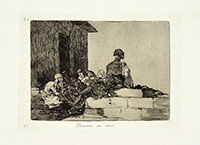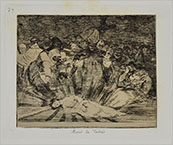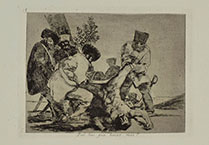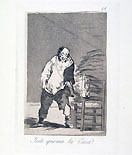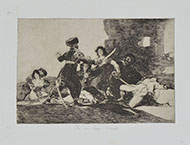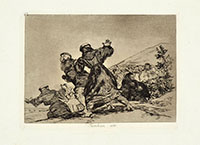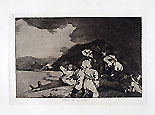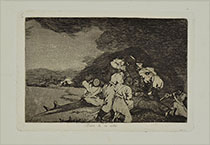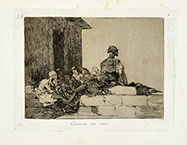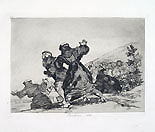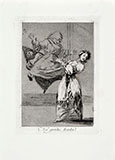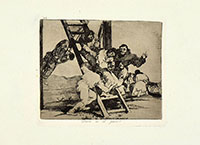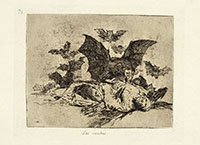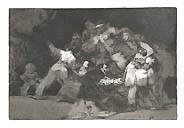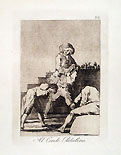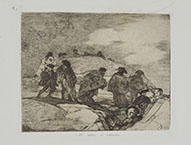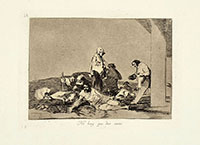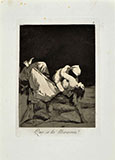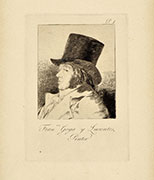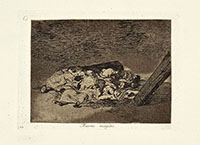(Fuendetodos, near Saragossa 1746 - Bordeaux 1828)
NO SE CONVIENEN (They do not agree), 1810-1820
Etching, lavis, drypoint, burin and burnisher, plate 17 from Los Desastres de la Guerra (c.1810-1820); Harris 137, III, 1b. An impression from the first edition (1863), limited to 500 copies, printed in sepia ink on heavy, absorbent wove paper. With full margins, traces of moisture on the lower margin, otherwise in very good condition. To the platemark 147 x 218 mm, the entire sheet measuring 230 x 329 mm.
The original title given by Goya to the series of 85 prints known as Los Desastres de la Guerra was Fatales consequencias de la sangrienta guerra en España con Buonaparte, Y otros caprichos enfáticos (Fatal consequences of Spain's bloody war with Bonaparte, and other emphatic caprices). Created between 1810 and 1820 Los Desastres de la Guerra expose the horror of the Spanish Peninsular War of 1808–14 and convey with stark intensity the barbarity and futility of war. They were not published until 1863, 35 years after Goya's death.
Goya is considered the most important Spanish artist of the late 18th and early 19th centuries and throughout his long career was a commentator and chronicler of his era. Immensely successful in his lifetime, Goya is often referred to as both the last of the Old Masters and the first of the moderns. His great body of works includes some 700 paintings, 900 drawings and almost 300 prints. He was a painter, an extraordinary portraitist, and a revolutionary printmaker.
In his teens he studied in Saragossa; in 1764 and 1766 Goya entered the competitions of the Real Academia de Bellas Artes de San Fernando in Madrid but failed; undaunted went to Rome to study past art; returned to Saragossa in 1771 and began to enjoy some success. In 1780 he was elected to the Real Academia de Bellas Artes and eventually became its Professor of Painting. In 1799, Goya became Primer Pintor de Cámara (Prime Court Painter) to Charles IV and María Luisa, the highest rank for a Spanish court painter. In the same year he published the first series of his etchings, Los Caprichos. In 1807, Napoleon led the French army into the Peninsular War against Spain. Goya remained in Madrid during the war, which seems to have affected him deeply. Although he did not speak his thoughts in public, they can be inferred from his Disasters of War series of etchings. Other works from his mid-period include Los Disparates etching series, and a wide variety of paintings concerned with insanity, mental asylums, witches, fantastical creatures and religious and political corruption.
His late period culminates with the Black Paintings of 1819–1823, applied on oil on the plaster walls of his house the Quinta del Sordo (House of the Deaf Man) where, disillusioned by political and social developments in Spain he lived in near isolation. Goya eventually abandoned Spain in 1824 to retire to the French city of Bordeaux, where he died.
